It’s a funny thing about trails. For me, they carry a lot more significance than their linear simplicity would imply. Not just because I know firsthand what it takes to build them, but because through every phase of life and all the changes passing years bring, I have always felt most at home on the trail.
From my early days of following my older sister around the trails of “the Audubon,” the forested reserve in Belmont, Massachusetts, I’ve loved being in the woods. Maybe it was the freedom and independence, or the chaotic and beautiful mess of millions of leaves covering the forest floor, or the busy comings and goings of birds and squirrels. Whatever the reason, those hours in the woods made an impression.
So during my college summers, when most of my fellow students were heading to the city for internships, I headed to the woods. Through a friend’s older brother, I landed the job of a lifetime building and maintaining the hiking trails of the White Mountain National Forest with the Appalachian Mountain Club’s professional trail crew.
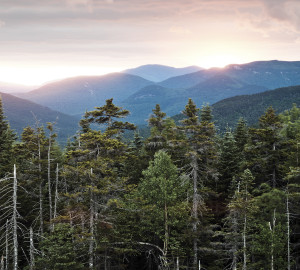
I spent four summers with the Appalachian Mountain Club (AMC), one of the oldest conservation organizations in the country, sleeping in the woods, waking up early and working late, building rock staircases and bog bridges, cooking over wood fires, tending torn fingers and blistered feet, fighting back blackflies and feeling a lifetime away from the world we knew.
And at the end of every day, we had built a stretch of trail in the mountains where thousands after us would walk; where step after step, future generations of strangers would get that much closer to the core of who they are.
Back at school months later, I would go through the motions of lectures, papers, and exams always thinking about getting back to the woods. There was one memory I would always revisit. In writing it down it doesn’t seem like that big a deal, but I guess that’s the way of life-changing moments — they usually don’t look like much from the outside.
Regardless of how uneventful it might seem in the telling, glimpses that I retain of trails through my favorite wild places are among the defining moments of my life. So during the year when my life in college in New Jersey seemed frustratingly distant from my better self in the woods, I would picture a particular moment alone on the trail, standing on the top step of a stone staircase that took days to build, with the rain running down my face. We were deep in a wilderness area that week and saw little hiker traffic. The rest of the crew was already well on their way up the trail, having finished their projects hours earlier.
I set the last rock on my staircase and stood back to look at my work. I won’t try to explain why, but of all the memories that have been lost to oblivion, that moment, standing there alone in the rain, is etched in my mind. To this day, when I lose my nerve, when fears keep me awake, when I brace for pain or doubt my resolve, that is the moment I draw on.
Needless to say, I gained a lot of respect for trails and the work that goes into creating them. Groups like the AMC began building trails in the 1800s, and later the Civilian Conservations Corps (CCC) brought trail building to a whole new level of artistry as part of the New Deal. I have made several pilgrimages to my favorite CCC masterpiece on the Perpendicular Trail above Long Pond in Acadia National Park. More than 75 years later, this CCC trail with a winding rock staircase built into a steep mountain slope is still a work of art. That kind of art is practiced today by AMC trails crews, the CCC, the Student Conservation Association (SCA) and many others who work on trails to keep the beauty of the outdoors accessible for the rest of us.
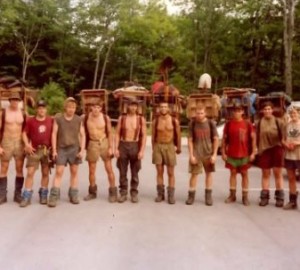
Four months after I hung up my double-bit ax at the end of my last summer on the trail crew, I began a career in land conservation. To this day, I am driven by that moment in the rain, that point of transformation, that sense of self and place that for me only solitude in the forest can inspire. And I never forget that someone first saved that remarkable forest for the public, allowing me to have that moment; I never forget that trail workers first built that trail in the mid-1800s so that I could repair it more than a century later. Nor that thousands have since walked that trail to share in a timeless experience of beauty in the woods.
In my current role as president and CEO of Save the Redwoods League, I get to oversee projects that not only protect some of the Earth’s most magnificent landscapes, but that provide ways for people to experience them. Whether saving a redwood forest or partnering with a crew of students to construct a new trail, I get to recreate one of my life’s best moments and pass it on. Nothing could be more rewarding.

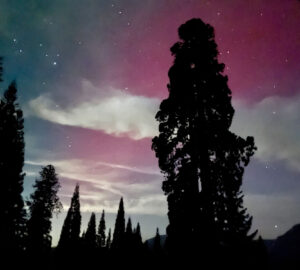
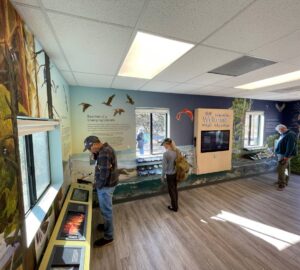
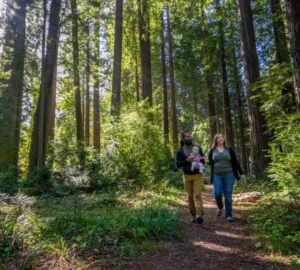
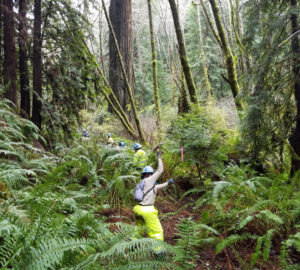
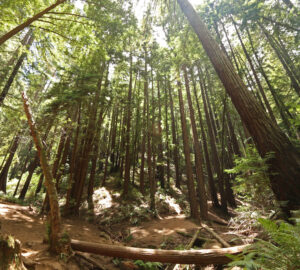
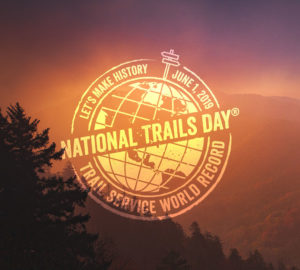
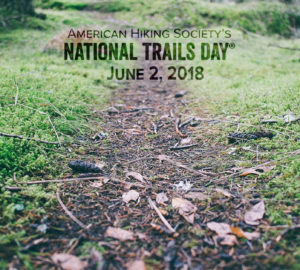
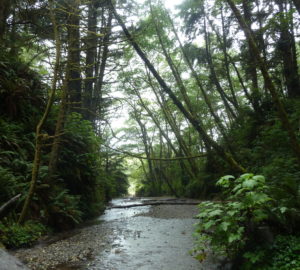
One Response to “The Funny Thing About Trails…”
Mak
Since childhood, I have found that the trails of other animals have more often held discoveries of value than have human constructs.
While recreationists often seek views only, it would seem more natural to follow one’s curiosity, with departures to views as only one part of the continuous learning experience.
On your side, I once journeyed up through a watershed and chose to explore an untrailed ridge. Upon arrival I noted that a bear had very often visited the same area, one with no possible route for a bear (I was pretty accomplished in free climbing, and can guarantee this). However the signs showed that the bear also returned for some non-foraging reason.
That said, most wildlife flee the overoccupied human trails, Traveling for years with a wolf, I noted the destruction of human trails, especially those where horse packing is allowed. Almost continuous damage occurs along human trails, perhaps not visible to those who cannot see: small artificial dislocations of rocks, and damage to plants from annuals to trees and branches, are the signs we see everywhere trails have been “developed.”
Less destructive animals respond to seasonal and yearly or longer-term changes by changin their trail patterns, while humans merely want the same trail bulldozed no matter the fall of ancient trees which would otherwise allow return of the ecosystem and relieve compaction and erosion of their trails. The flow of enw forest and succession should require that trails be as ephemeral as the forest dictates, rather than yet another imposed freeway.
the life of about 3 redwoods takess their world back to before a human ever saw or trod their continent. Salmon fed the forest for 18 million years, and the forest fed the salmon. This redwood forest was never felled by men until about the birth of a man I knew who influenced my life. Before 1850 no men “built” trails, but walked around trees, seeing the dens in their roots, the springing up of huckleberry and thimbleberry in the newly opened sunlight. Now, empty, sterile built trails arrow seemingly permanently, absent of the trillium taken without thought by humans, absent of the elk for whom the river was named, absent of foraging bears who were once the largest on the continent, matched only by the Alaskan salmon-eaters..
I visited this site due to the solicitation for purchasing a certain ranch. I once waded in that creeky river right through those areas, avoiding the obvious redds, swimming in the cold holes. The forest does not exist to modify for tourism, but is an intricately connected community of life, and humans, whether wishing to modify it for their pleasure, or as Red Emmerson, for their profit, would do far better to visit that community with a tread so light as to be invisible.
Those bears, those salmon, perhaps those wolves, those elk, are the proper managers, hushed below the redwoods whose tiny children struggle to grow, eaten by men , worshipped only because less than 2 % remain. That percentage is a common figure of most of the large organisms left on earth within a mere 60 to 150 years.
Reduce trail modification – it is mere destruction.